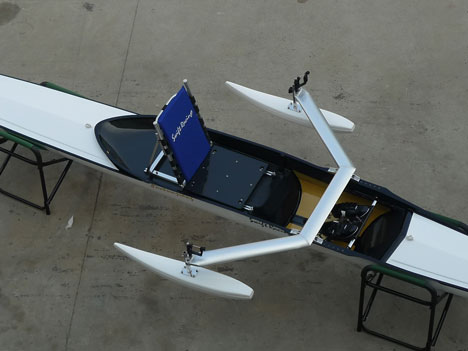Ever wish you could roller skate to class and then not have to carry around those giant stakes afterward? Well now you can! With these beauties that Amy and I designed and built:
 |
| The Minion Skate |
Yes, they are still kinda large, but that is only because our materials and building expertise were limited. The idea itself was sound! And they have minions on them...
Note: Yes, we know that strap-on roller skates already exist. We did not, however, realize this when we started designing them, so lets just pretend that they are a new idea.
THE PROCESS
It all started one day when we were walking back to our dorms from engineering class. We randomly brainstorming and sharing ideas (because we are nerds), when we finally thought of the best idea ever: a whole line of skates, skis, and snowshoes that you could strap over your shoes as you traveled speedily to class.
By an amazing coincidence, the next week our assignment in engineering class was to design and build a prototype of something. We immediately decided to put our idea into practice, and we chose to create the strap-on roller skates that eventually became the Minion Skates.
Our original sketch:
 |
| Original Sketch |
 |
| Me drawing the original sketch |
We changed a lot of things between the original plan and the actual finished product. Especially our materials. We changed our materials about 400 times.
Original Materials:
| Base plate | Wood |
| Foot plate | Blue styrofoam |
| Ankle support | Blue styrofoam |
| Straps | Velcro |
| Wheels | Thick wood |
| Axles | Metal dowels |
| Wheel structure | Wood |
Wheel structure
- base plate
- foot plate
connections | Metal screws
|
These are basically the only materials that stayed the same.
We were having a lot of problems with designing our heel support so that the 3D printer would print it out.
But luckily Professor Banzaert saved the day and figured out how to make the model:
Another problem: Amy was too short to see in the 3D printer... But we figured it out...
And the heel pieces came out beautifully... After we forgot to print out the second heel support. Luckily, Amy was in the lab 5 hours early, so the piece was already printed by the time I got there...
Then we decided to laser cut the wheels out of sheets of plastic.
Materials:
| Base plate | Wood |
| Foot plate | Blue styrofoam |
| Ankle support | Blue styrofoam 3D-printed |
| Straps | Velcro |
| Wheels | Thick wood Plastic layers |
| Axles | Metal dowels |
| Wheel structure | Wood |
Wheel structure
- base plate
- foot plate
connections | Metal screws
|
After a few tires, we found the right size hole to fit the dowel that we were using as the wheel axle.
Then we tried cutting the metal dowels.... It didn't go well... So we switched to plastic...
We were going to use these stoppers to hold the dowels in place:
But when we put them into the holes in the wooden sides, we discovered that they were already held in by tension.
We were also going to epoxy the plastic wheel sheets to each other, but the epoxy didn't like that idea, so we just let them be loose. And it still moves, so I count it as a success.
We were also going to screw the wooden plates and the foam together.
But that didn't work out because we realized that we could just hot glue it together. We were making a looks-like model, not a works-like model, so the skates didn't have to be weight-bearing.
We then added the velcro, which had an adhesive side.
And they were beautiful, albeit with much different materials than we had planned!
Final Materials:
| Base plate | Wood |
| Foot plate | Blue styrofoam |
| Ankle support | Blue styrofoam 3D-printed |
| Straps | Velcro |
| Wheels | Thick wood Plastic layers |
| Axles | Metal dowels Plastic dowels |
| Wheel structure | Wood |
Wheel structure
- base plate
- foot plate
connections | Metal screws Different metal
screws Hot glue
|
Then we decorated them and the Minion Skate was born.









































